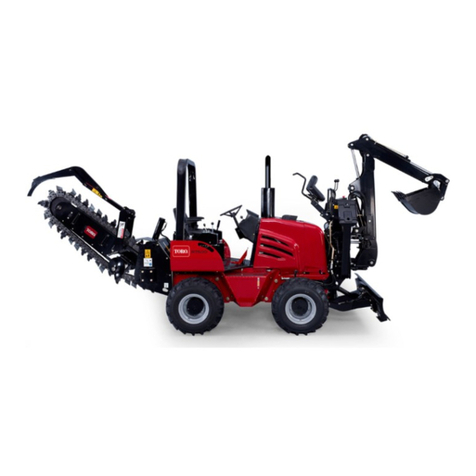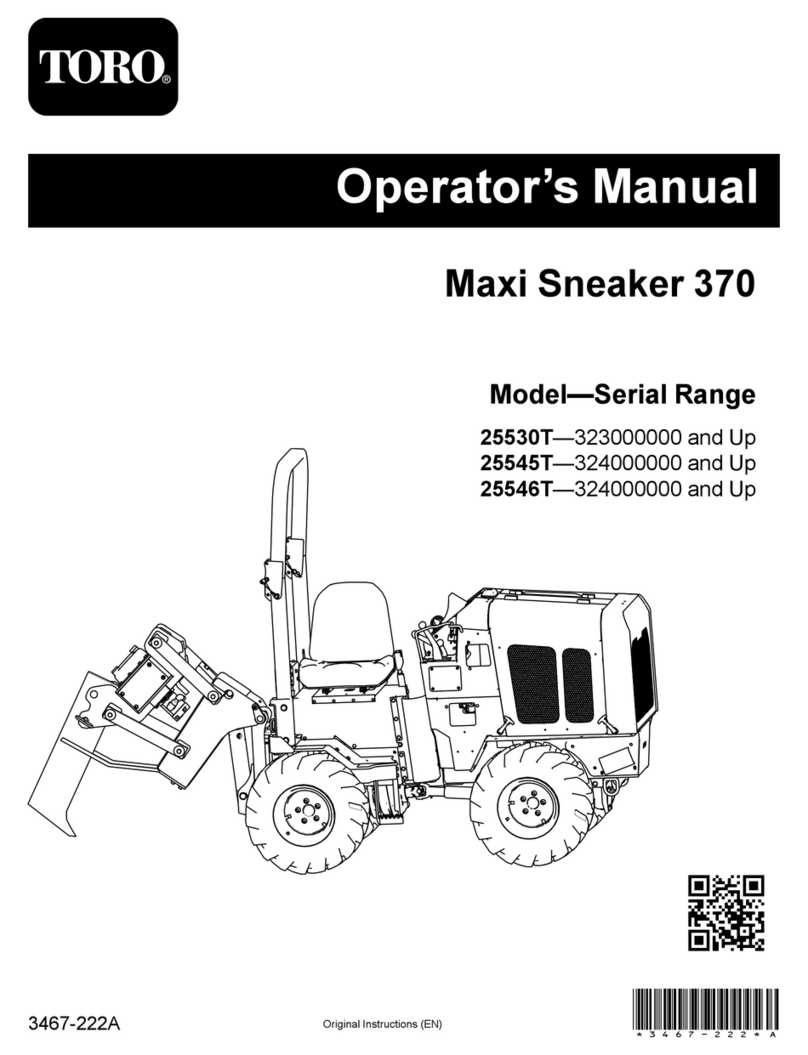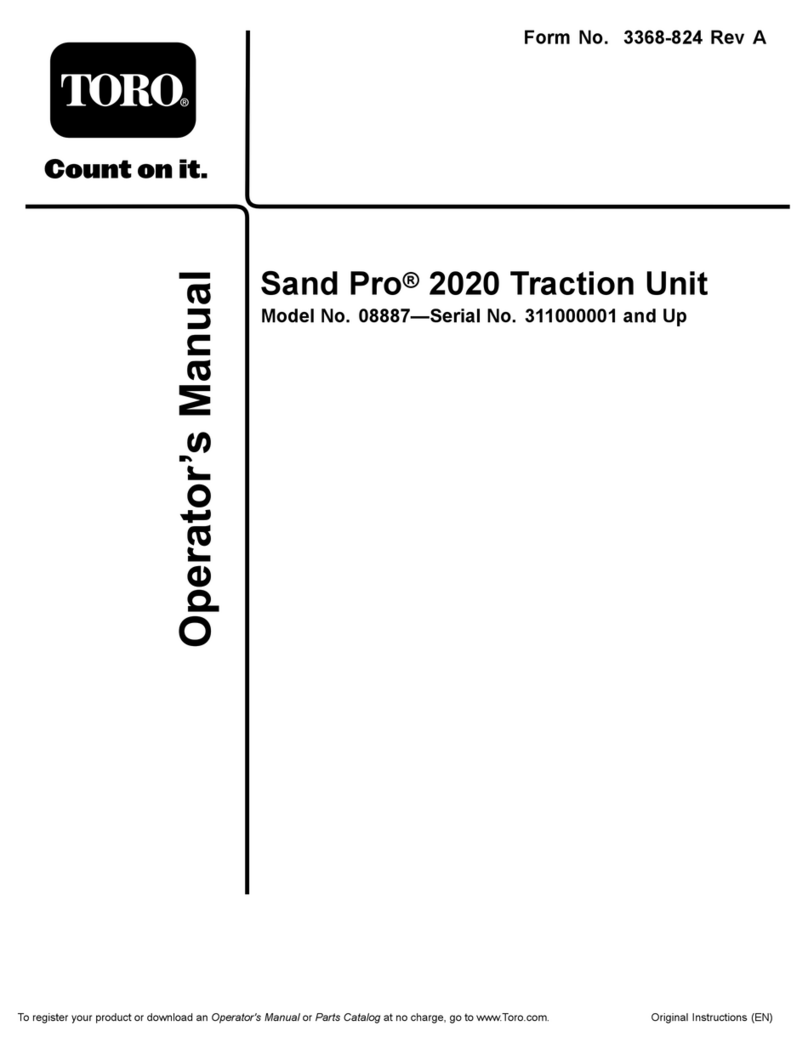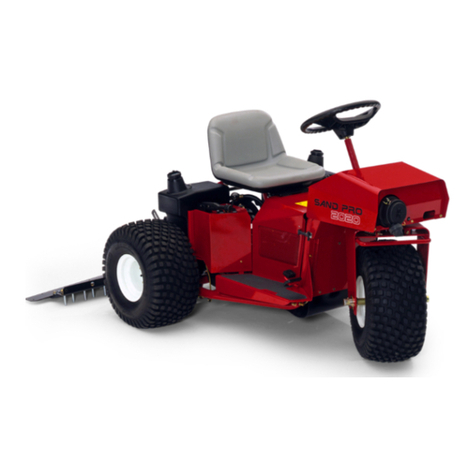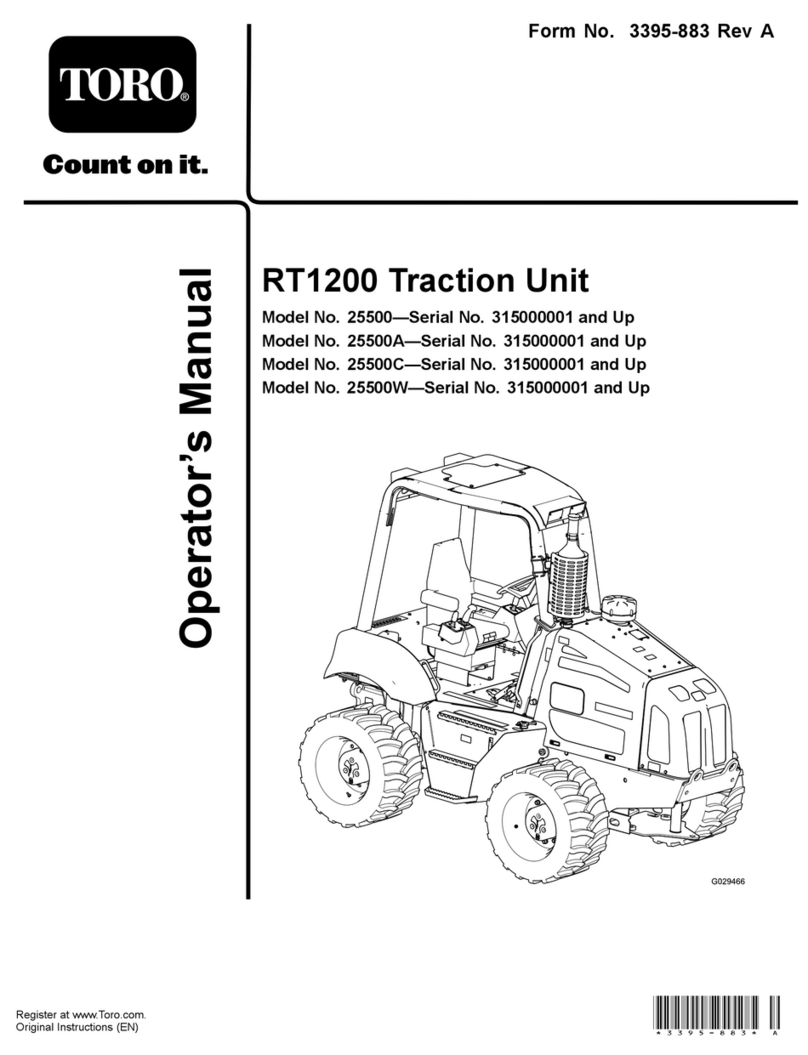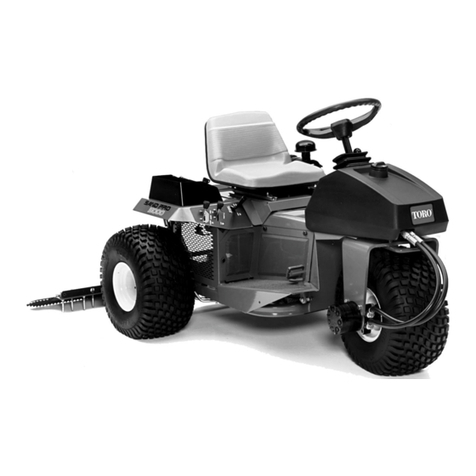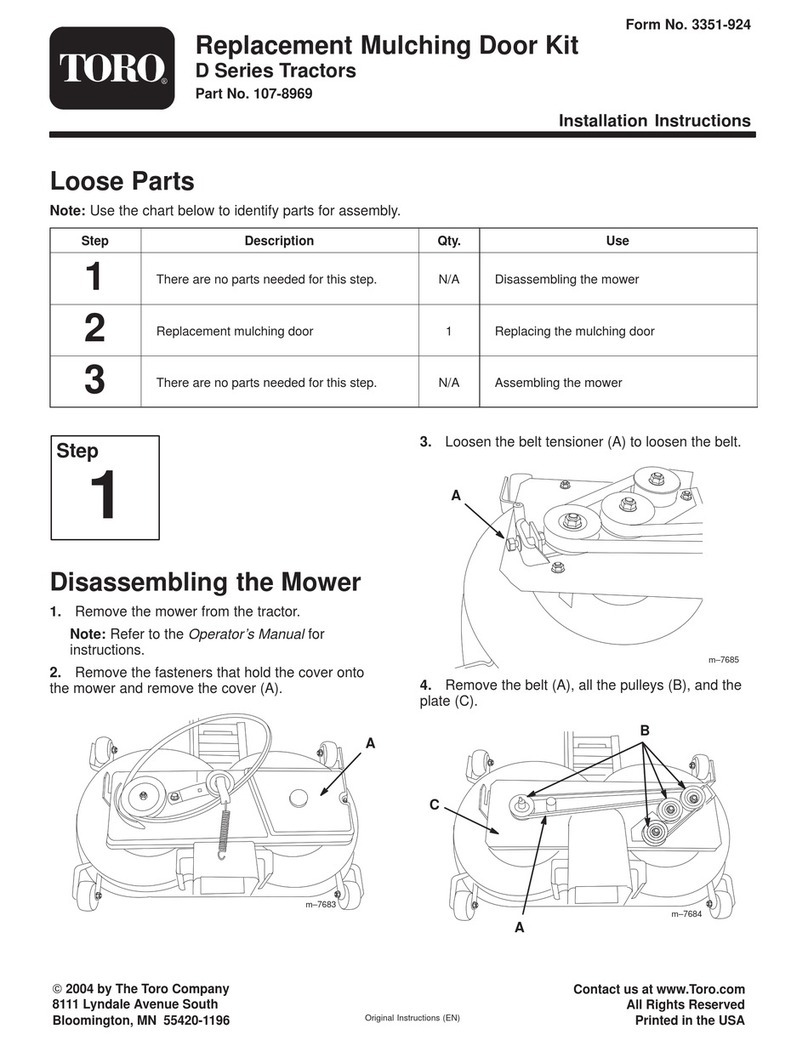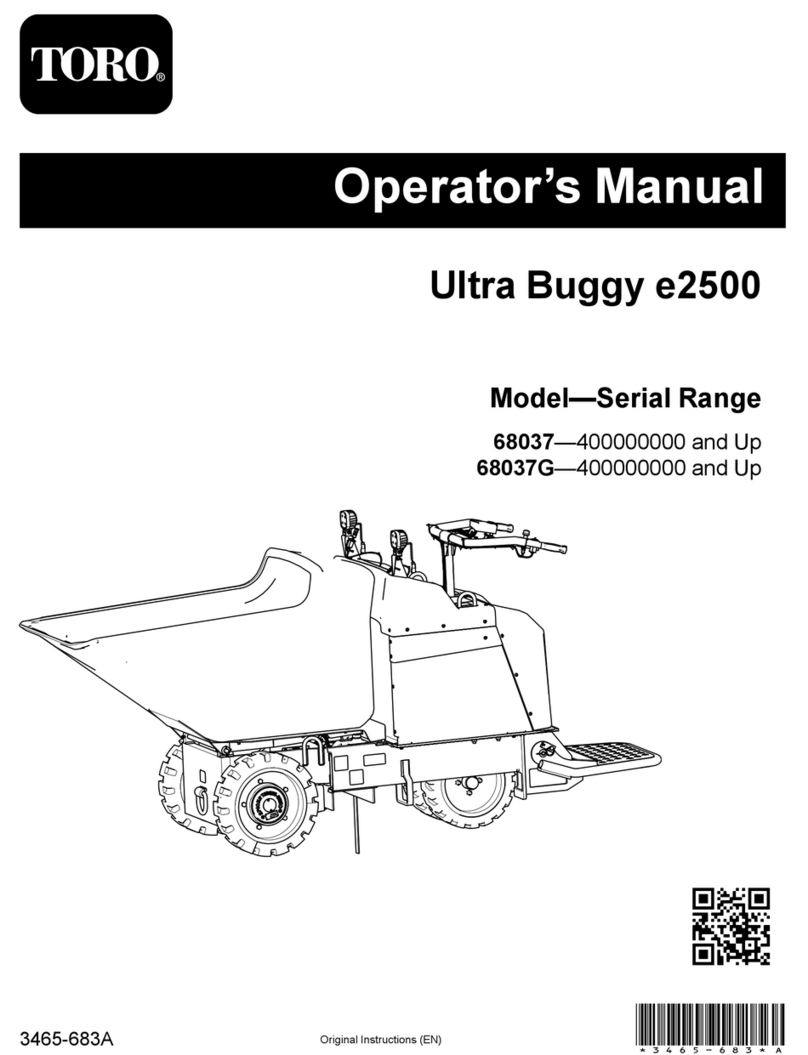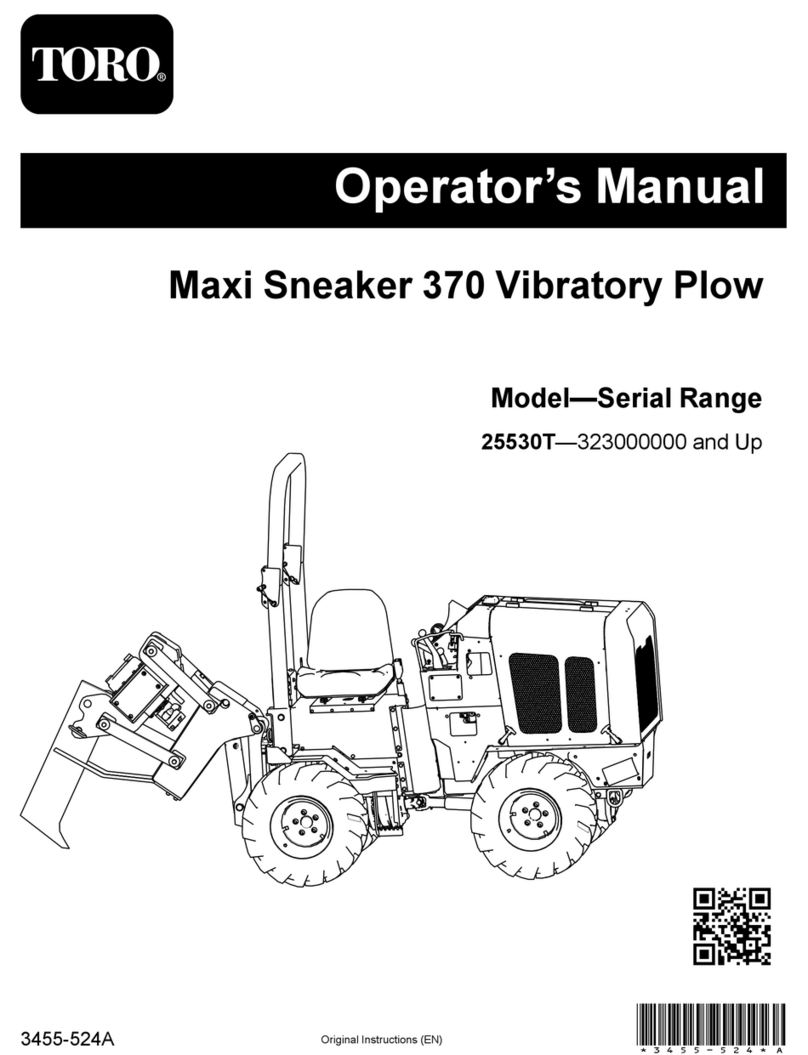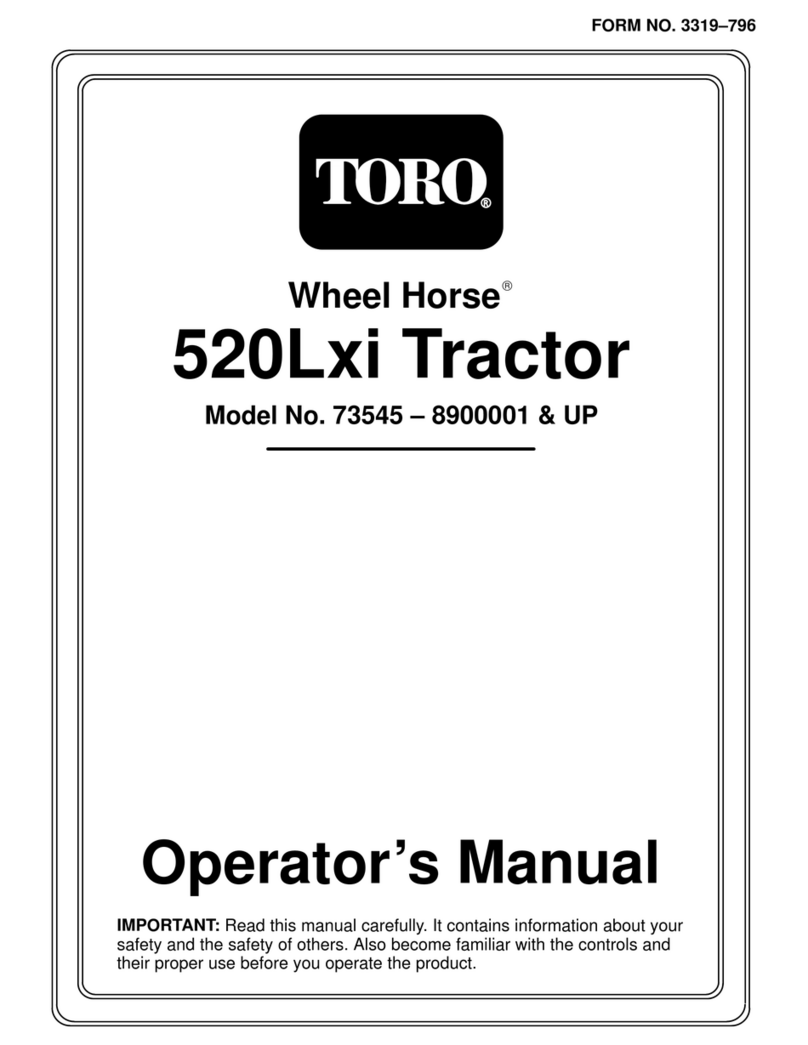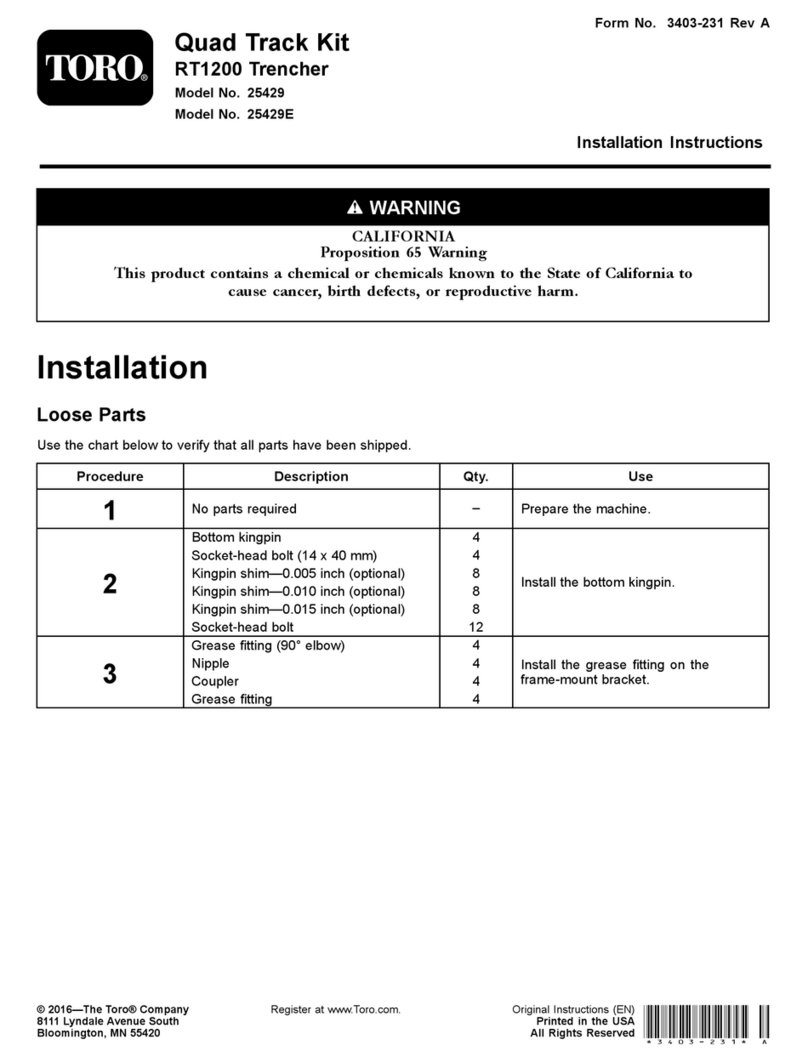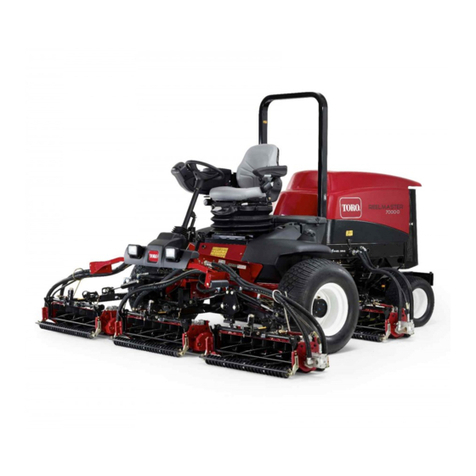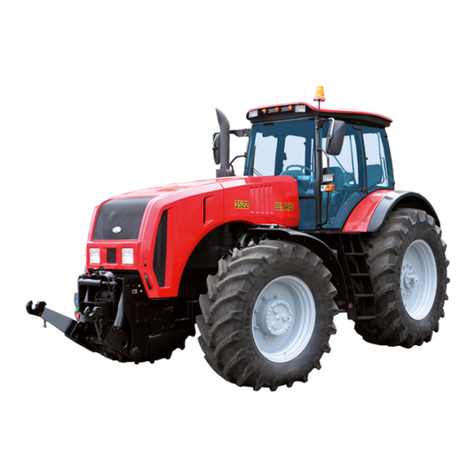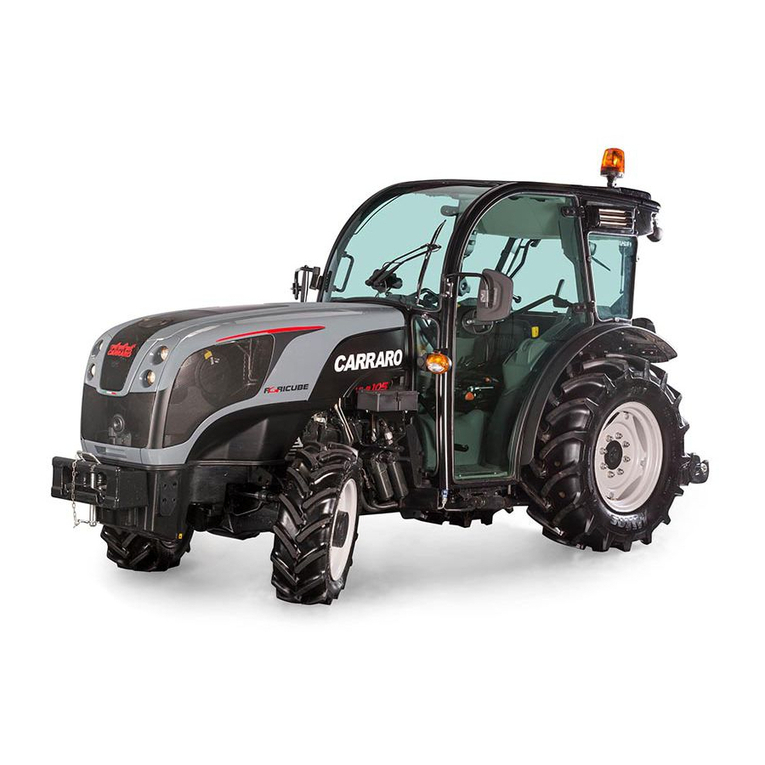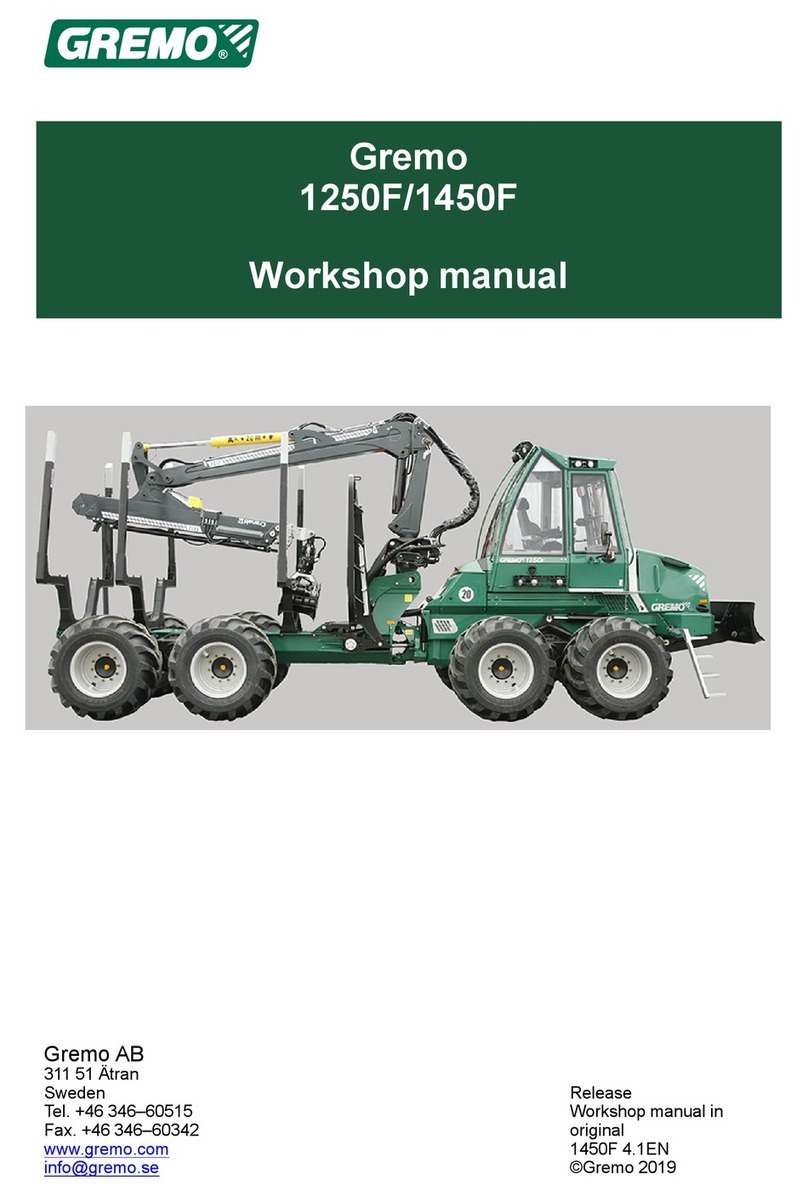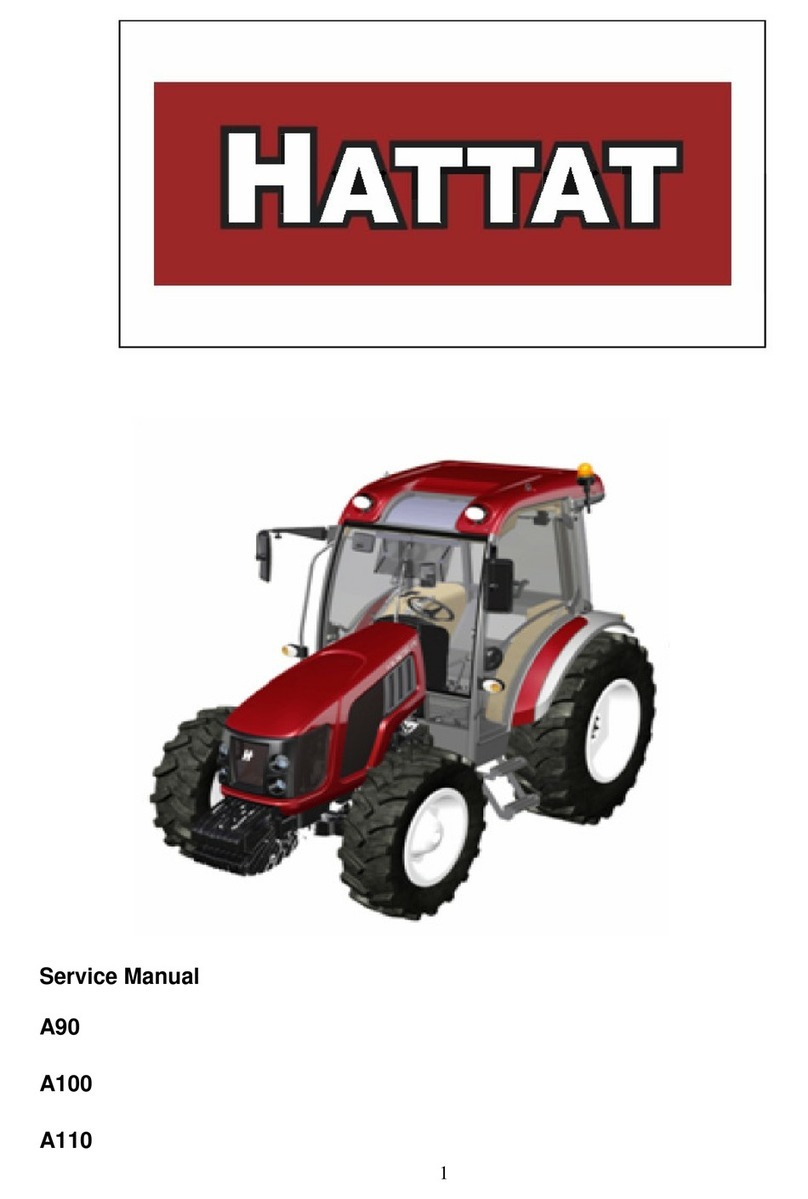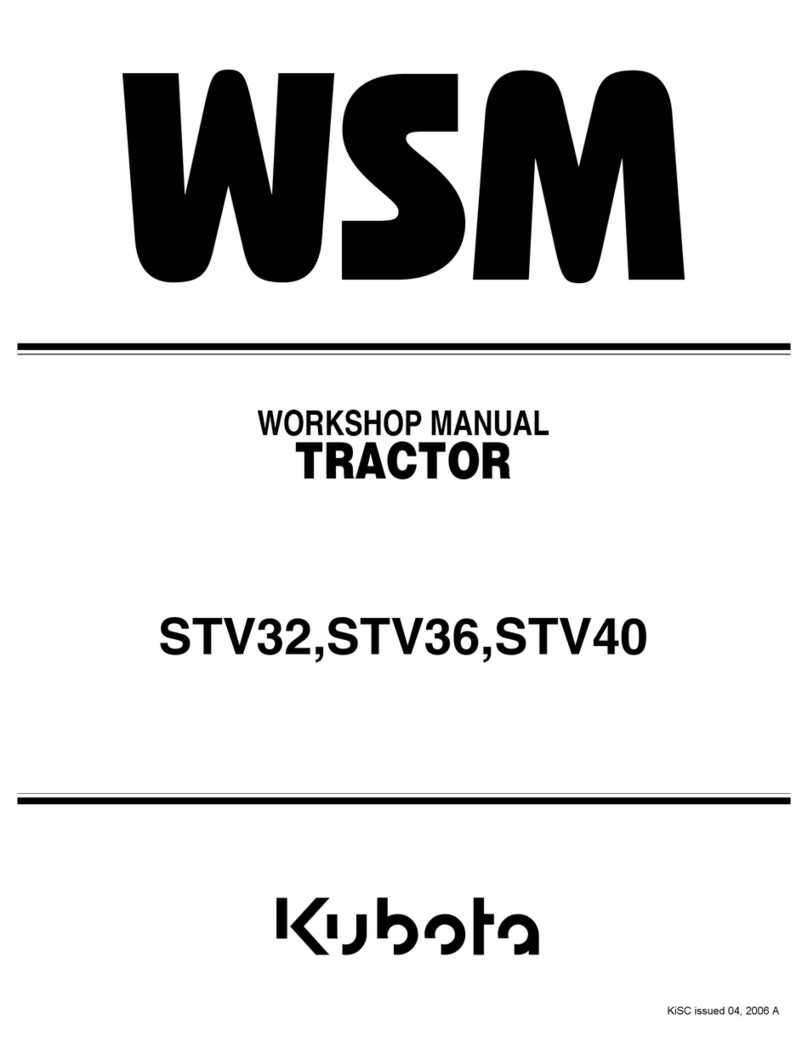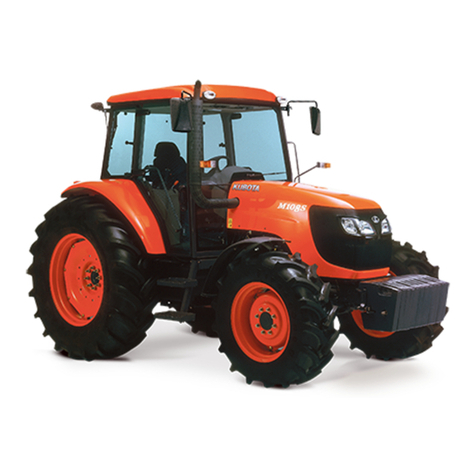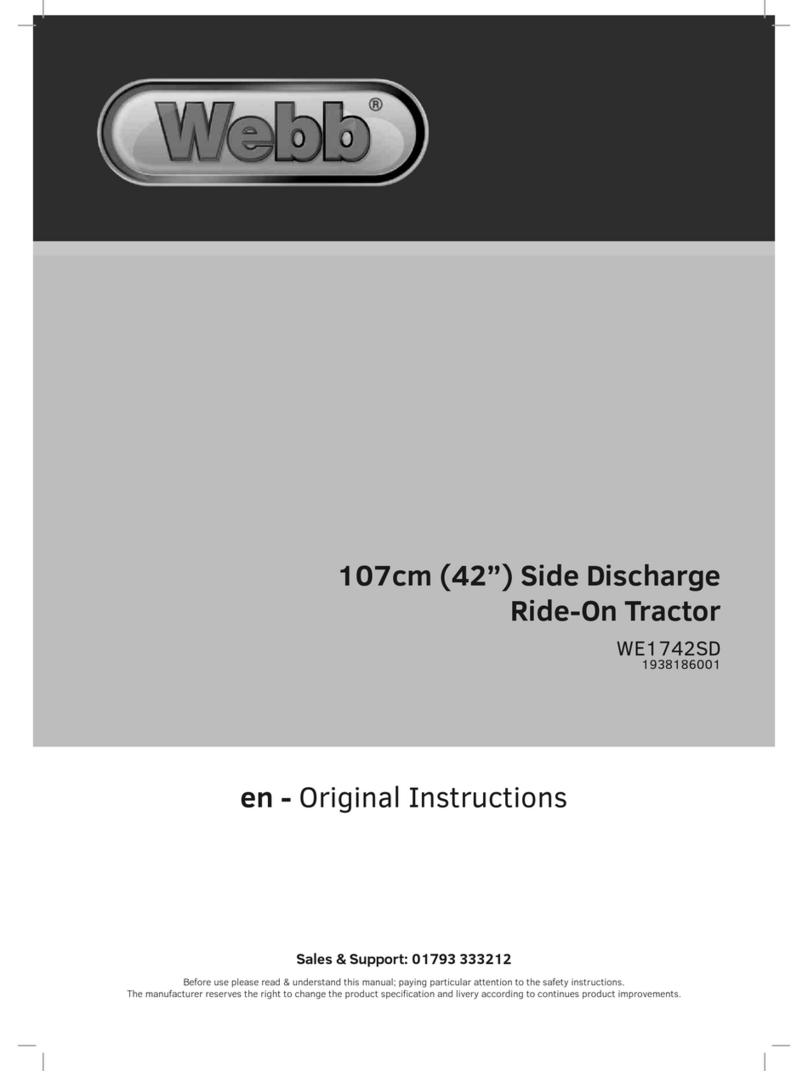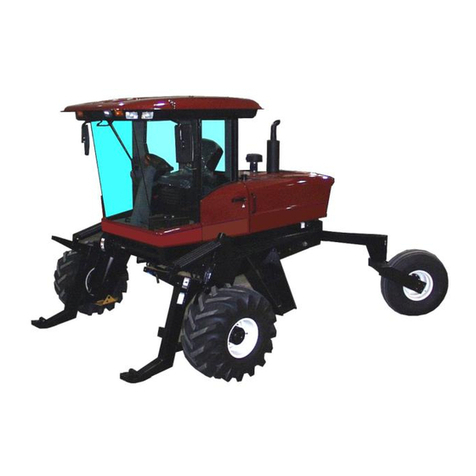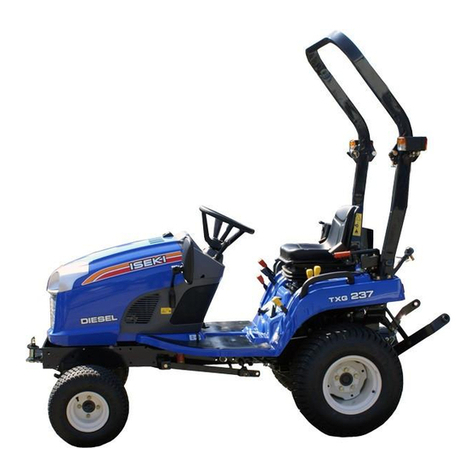
The SAND PRO 5000 was designed and tested to
offer safe service when operated and maintained
properly. Although hazard control and accident pre-
vention partially depend up the design and configu-
ration of the machine, these factors also depend on
the awareness, concern, and proper training of the
personnel involved in the operation, transport, main-
tenance, and storage of the machine. Improper use
or maintenance of the machine can result in injury or
death. To reduce the potential for injury or death,
comply with the following safety instructions.
WARNING: Engine exhaust contains carbon monox-
ide which is an odorless, deadly poison. Do not run
the engine indoors or in an enclosed area.
BEFORE OPERATING
1. Operate the machine only after reading and
understanding the contents of this manual. A
replacement manual is available by sending
complete model and serial number to: The Toro
Company, 8111 Lyndale Avenue South,
Minneapolis, Minnesota 55420.
2. Never allow children to operate the machine or
adults to operate it without proper instructions.
3. Become familiar with the controls and know
how to stop the engine quickly.
4. Keep all shields, safety devices and decals in
place. If a shield, safety device or decal is mal-
functioning, illegible, or damaged, repair or
replace it before operating the machine.
5. Always wear substantial shoes. Do not operate
the machine while wearing sandals, tennis shoes
or sneakers. Do not wear loose fitting clothing
which could get caught in moving parts and
cause personal injury.
6. Wearing safety glasses, safety shoes, long pants
and a helmet is advisable and required by some
local safety and insurance regulations.
7. Ensure traction neutral is adjusted correctly so
the engine cannot be started unless the traction
pedal is released and in neutral position.
8. Keep everyone, especially children and pets
away from the areas of operation.
9. Since gasoline is highly flammable, handle it
carefully.
A. Use an approved gasoline container.
B. Do not remove cap from fuel tank when the
engine is hot or running.
C. Do not smoke while handling gasoline.
D. Fill fuel tank outdoors and to about one inch
below top of tank, (bottom of filler neck).
Do not overfill.
E. Wipe up any spilled gasoline.
10. Check the safety interlock system daily for prop-
er operation; refer to page 14. If the switch
should malfunction, replace the switch before
operating the machine. (After every two years,
replace the interlock switch in the safety system,
whether it is working properly or not.)
WHILE OPERATING
11. Exhaust fumes are hazardous and could be dead-
ly, so do not run the engine in a confined area
without adequate ventilation.
12. Sit on the seat when operating the machine.
Never carry passengers.
13. When starting the engine:
A. Make sure the traction pedal is released.
B. After the engine is started, keep foot off the
traction pedal. The machine must not move.
If movement is evident, the neutral return
mechanism is adjusted incorrectly; there-
fore, shut the engine off and
readjust so the machine does not move
when in neutral position. If the engine does
not start, check interlock switch connec-
tions.
14. Using the machine demands attention. To pre-
vent tipping or loss of control:
A. Use care when entering and leaving sand
4
Safety Instructions

